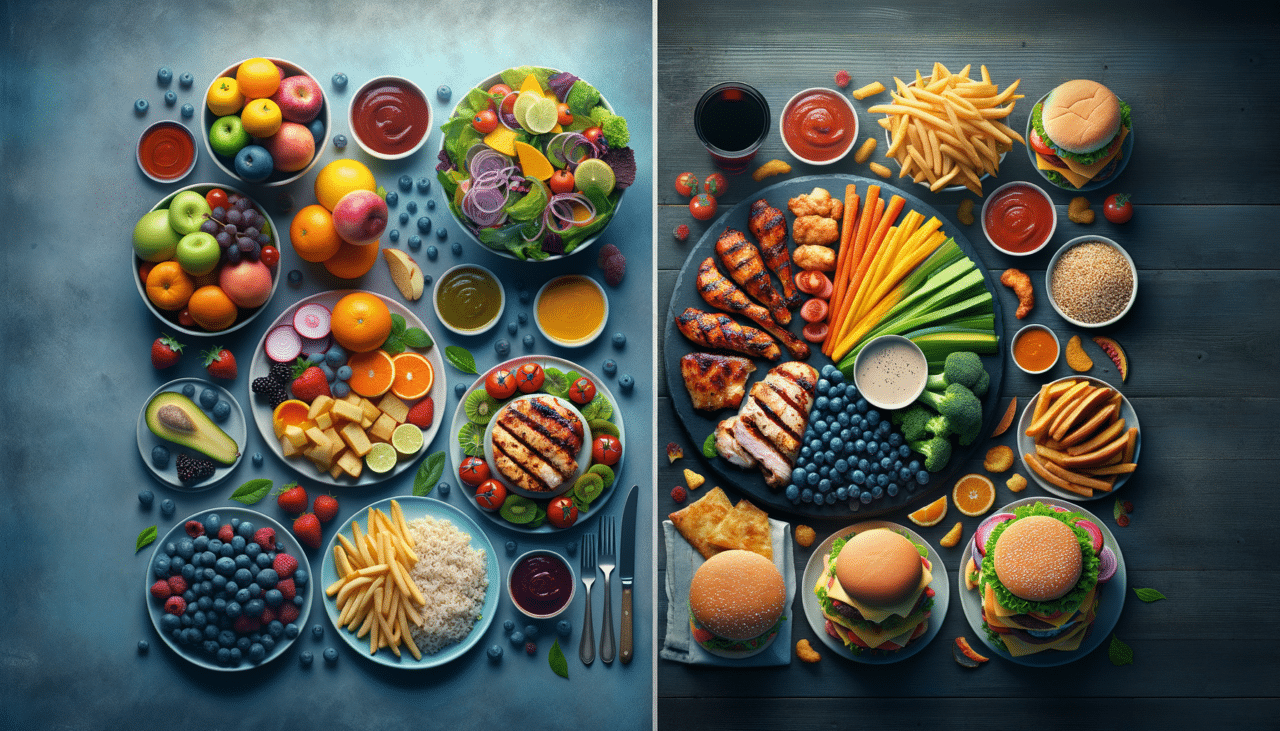In the realm of dietary choices and weight management, two popular approaches often arise: the Portion-Controlled Diet and the No Portion Control Diet. Each method comes with its own set of principles, benefits, and drawbacks. Whether you are aiming for weight loss, maintenance, or a healthier lifestyle, understanding these two dietary approaches can help you make an informed decision. In this article, we will delve into the characteristics of each diet and provide a comparative table to highlight their main points.
Characteristics of Portion-Controlled Diet
A Portion-Controlled Diet emphasizes managing the amount of food consumed in a single sitting. This approach is not about what you eat but how much you eat. Here are some key characteristics:
-
Calorie Awareness: This diet often involves counting calories to ensure that you do not exceed your daily caloric needs.
-
Pre-portioned Meals: Many followers use pre-portioned meals or portion control tools to help manage their intake.
-
Mindful Eating: Encourages slow eating and mindful practices to recognize hunger and satiety cues.
-
Variety and Balance: Allows for a variety of foods but in controlled portions, promoting a balanced diet.
-
Focus on Moderation: Helps prevent overeating by emphasizing moderation and control over portion sizes.
-
Structured Eating: Often involves planning meals and snacks ahead of time to maintain portion control.
Characteristics of No Portion Control Diet
A No Portion Control Diet, as the name suggests, does not focus on the amounts of food consumed. Instead, it often emphasizes the quality and type of food. Here are its key characteristics:
-
Freedom of Quantity: There is no restriction on the amount of food one can eat, allowing for more freedom in meal sizes.
-
Focus on Food Quality: This diet often prioritizes whole, unprocessed foods over processed ones.
-
Listening to Body Signals: Encourages eating based on hunger and fullness cues rather than pre-determined portion sizes.
-
Less Structured: Typically involves less meal planning and more flexibility in dietary choices.
-
Potential for Overeating: Without portion control, there is a higher risk of consuming more calories than needed.
-
Emphasis on Satisfaction: Prioritizes eating for satisfaction and enjoyment, potentially leading to a more positive relationship with food.
Comparative Table: Portion-Controlled Diet vs. No Portion Control Diet
| Aspect | Portion-Controlled Diet | No Portion Control Diet |
|---|---|---|
| Caloric Awareness | High – Often involves calorie counting | Low – Less focus on calories, more on food quality |
| Meal Structure | Structured – Pre-planned meals and snacks | Flexible – Less emphasis on meal planning |
| Portion Sizes | Controlled and measured | Flexible and large if desired |
| Food Variety | Diverse – Encourages a variety of foods in moderation | Diverse – Emphasizes whole and unprocessed foods |
| Eating Speed | Slow and mindful eating | Varied – Based on personal preference |
| Risk of Overeating | Lower – Due to controlled portions | Higher – Due to lack of portion control |
| Focus | Managing quantity | Enhancing quality and satisfaction |
| Satiety Cues | Emphasized – Recognize hunger and fullness | Highly emphasized – Eat based on personal signals |
| Diet Flexibility | Moderate – Requires adherence to portion sizes | High – Greater flexibility in meal sizes and choices |
Conclusion
Choosing between a Portion-Controlled Diet and a No Portion Control Diet depends on individual preferences, lifestyle, and health goals. A Portion-Controlled Diet may be ideal for those who thrive on structure and are focused on weight management through calorie control. Conversely, a No Portion Control Diet could be more suitable for individuals who prefer flexibility and are focused on the quality of their food rather than the quantity. Ultimately, the best diet is one that aligns with your personal needs and helps you maintain a healthy, balanced lifestyle.
By understanding the nuances of these dietary approaches, you can make a more informed decision that suits your health and wellness goals. Whether you choose to control your portions or embrace a more flexible approach, the key is to adopt a sustainable eating pattern that you can maintain in the long run.
Meta Description: Explore the differences between Portion-Controlled Diet and No Portion Control Diet. Learn about their characteristics, benefits, and drawbacks in this comprehensive comparison guide.

Comments (0)
There are no comments here yet, you can be the first!